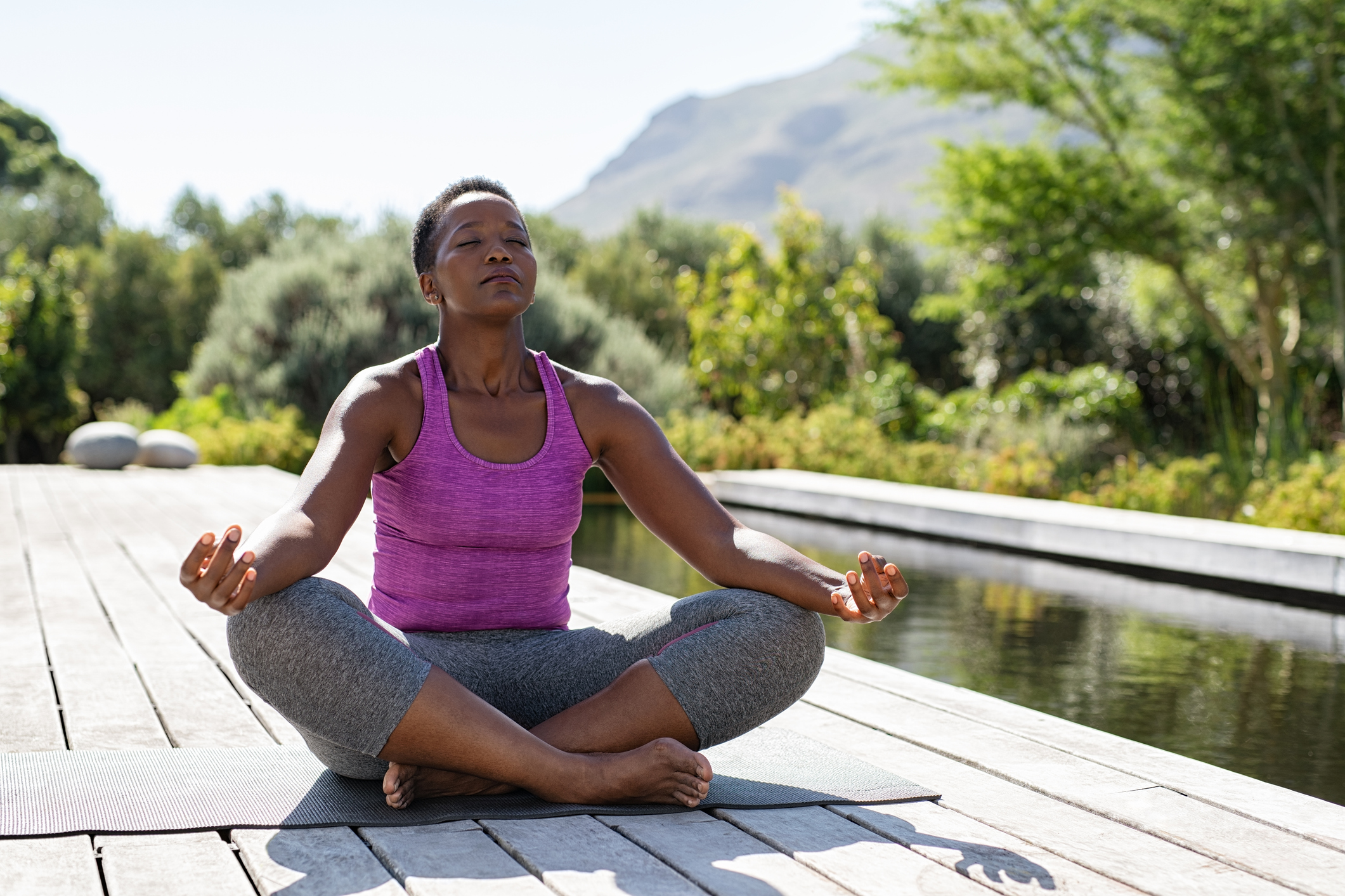Breathwork Techniques vs. Pranayama Practices: Key Differences and Surprising Similarities
In today’s fast-paced world, more people are turning to the power of breath to relieve stress, improve focus, and reconnect with themselves. Two practices that often come up in this context are Breathwork and Pranayama. While they might seem similar at first glance—they both involve breathing exercises—there are some key differences that set them apart.
Whether you’re just getting started or looking to deepen your understanding, this guide breaks down the similarities and differences between modern breathwork techniques and traditional Pranayama practices in a simple, easy-to-digest way.
What is Breathwork?
Breathwork is a broad term that refers to a variety of breathing techniques designed to improve mental, emotional, and physical well-being. It’s more modern and therapeutic in nature and has gained a lot of popularity in the West in recent decades.
Breathwork can include:
- Holotropic Breathwork
- Rebirthing Breathwork
- Transformational Breath
- Conscious Connected Breathing
- And many other contemporary styles
Most breathwork practices aim to release stored emotions, reduce anxiety, enhance clarity, or reach altered states of consciousness. They are often used in therapy sessions, personal development workshops, or healing retreats.
What is Pranayama?
Pranayama comes from the ancient Indian yogic tradition. The word is a combination of “Prana” (life force or vital energy) and “Ayama” (control or expansion). Pranayama is one of the eight limbs of yoga described in the Yoga Sutras of Patanjali.
It includes breathing techniques designed to:
- Control and direct the flow of prana (energy)
- Prepare the body for meditation
- Cleanse the mind and nervous system
- Enhance vitality and spiritual awareness
Common pranayama practices include:
- Nadi Shodhana (alternate nostril breathing)
- Kapalabhati (skull-shining breath)
- Bhramari (bee breath)
- Ujjayi (victorious breath)
- Anulom Vilom
These techniques are often practiced in a seated, meditative position and are usually part of a broader yogic lifestyle.
Key Differences Between Breathwork and Pranayama

While both involve conscious breathing, breathwork and pranayama differ in their goals, roots, and techniques. Let’s take a closer look:
1. Origins and Tradition
- Breathwork: Modern and mostly Western, with roots in psychology, trauma healing, and personal growth. Developed in the 20th century.
- Pranayama: Ancient and Eastern, rooted in Indian yogic philosophy and spiritual disciplines going back thousands of years.
2. Primary Purpose
- Breathwork: Focuses on emotional release, stress reduction, healing, and accessing expanded states of consciousness.
- Pranayama: Aims at purifying the energy channels (nadis), preparing the mind and body for meditation, and controlling life force energy.
3. Structure and Guidelines
- Breathwork: Less structured. Techniques vary widely by practitioner or school. Can be done lying down, with music, and often includes emotional release.
- Pranayama: Very structured. Specific timings, breath counts, body postures, and rules must be followed. Often done in silence and stillness.
4. Breathing Patterns
- Breathwork: Emphasizes deeper, faster, or continuous breathing. Often unregulated and intuitive.
- Pranayama: Controlled breathing with exact inhale-retain-exhale ratios (like 1:4:2 or 4:4:4). Retention (kumbhaka) is a key element.
5. Spiritual vs Therapeutic
- Breathwork: Therapeutic and emotional, with a psychological or somatic approach.
- Pranayama: Spiritual and energetic, focused on connecting with the divine, raising consciousness, and mastering the self.
How Are Breathwork and Pranayama Similar?

Despite their differences, breathwork and pranayama also share several things in common:
1. Conscious Breathing
At their core, both are about being aware of your breath and using it intentionally to bring about change—whether physical, emotional, or spiritual.
2. Stress Reduction
Both techniques are powerful tools for reducing stress, calming the nervous system, and improving mental clarity.
3. Mind-Body Connection
Breath is the bridge between the mind and body. Both practices help cultivate mindfulness, emotional awareness, and inner peace.
4. Health Benefits
From improving lung capacity and lowering blood pressure to boosting immunity and enhancing sleep—both practices offer a long list of health benefits.
5. Breath as a Tool for Transformation
Whether it’s trauma release in modern breathwork or energetic purification in pranayama, both recognize breath as a tool for deep, transformative inner work.
Advanced Tips for Practicing Both Safely

If you’re planning to dive deeper into either breathwork or pranayama, here are a few tips to keep in mind:
✅ Start Slow
Don’t jump into intense practices right away. Begin with simple techniques like deep belly breathing or alternate nostril breathing.
✅ Learn from a Qualified Teacher
Especially for pranayama, having a trained instructor is crucial. Incorrect breath retention or pacing can lead to dizziness or strain.
✅ Listen to Your Body
Your breath is a reflection of how you’re feeling. If you feel overwhelmed or lightheaded, ease up or stop.
✅ Practice in a Safe Environment
Avoid breathwork in water or while driving. Create a calm, safe space where you can focus inward.
✅ Stay Consistent
A few minutes of daily practice can do more than an occasional long session. Build it into your morning or evening routine.
Which One Should You Choose? Breathwork or Pranayama?

It really depends on your goals, preferences, and lifestyle.
- If you’re looking for emotional release, modern breathwork techniques may be the better fit.
- If you’re seeking spiritual growth and inner discipline, pranayama is your path.
- If you’re drawn to both, why not explore each? Many people combine them—using breathwork for emotional healing and pranayama for spiritual clarity.
You don’t have to choose one over the other. They can beautifully complement each other.
FAQs: Breathwork vs. Pranayama
❓ Is breathwork the same as pranayama?
No, breathwork and pranayama are not the same. Breathwork is a modern, often therapeutic practice focused on emotional healing, while pranayama is an ancient yogic practice aimed at spiritual growth and energy control.
❓ Can I practice both breathwork and pranayama?
Absolutely! Many people benefit from incorporating both into their routine. Just make sure you understand the intention behind each practice and do them with awareness.
❓ Are there any risks involved?
Yes. If done improperly, intense breathwork or advanced pranayama can lead to dizziness, hyperventilation, or anxiety. Always start with beginner techniques and consult a qualified teacher.
❓ Which is better for anxiety?
Both can be helpful. Simple breathwork techniques like connected breathing or box breathing can quickly calm the nervous system. Pranayama techniques like Nadi Shodhana or Bhramari are also excellent for balancing emotions and reducing anxiety.
❓ How long should I practice?
Start with 5–10 minutes a day. As your comfort and experience grow, you can increase the duration gradually.
❓ Do I need to sit in a certain posture?
Pranayama typically requires a meditative seated posture with a straight spine. Breathwork can be done seated, lying down, or even walking—depending on the technique.
Final Thoughts: Two Paths, One Breath
Whether you’re leaning toward the ancient roots of pranayama or the modern therapeutic methods of breathwork, remember this: your breath is one of the most powerful tools for healing, growth, and transformation.
Both paths teach us how to slow down, tune in, and live with more awareness. And in a world that constantly pulls us outward, practices that bring us back to ourselves are more valuable than ever.
So take a deep breath—literally—and start exploring the technique that resonates with you most. One breath at a time, you’ll discover what your body, mind, and spirit truly need.
Tags: Breathwork vs Pranayama, Breathwork Techniques, Pranayama Practices, Ancient vs Modern Breathing, Emotional Healing, Yogic Breathing, Mindfulness, Stress Relief, Meditation Tools, Conscious Breathing
